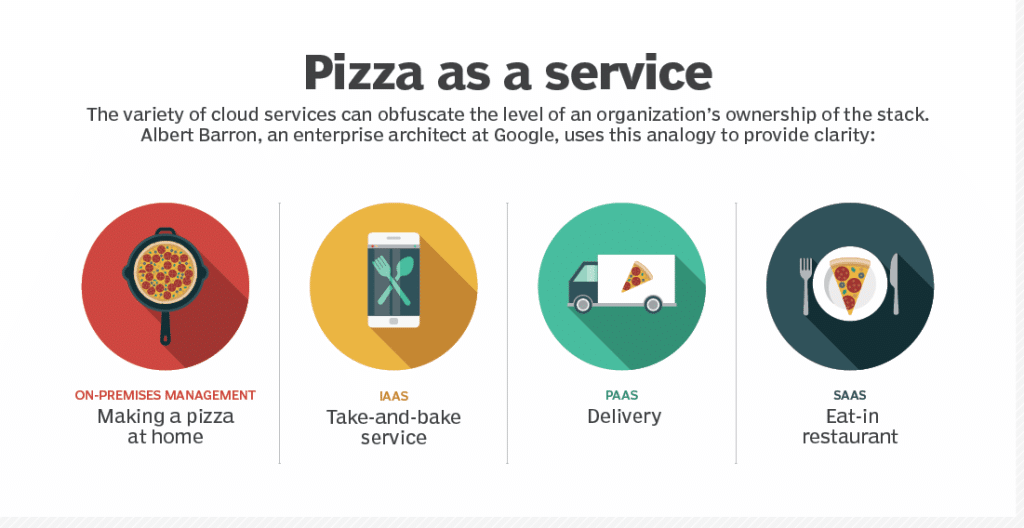Software as a Service (SaaS)
Understanding SaaS
Software as a service (SaaS) is a software distribution model where applications are hosted by a cloud provider and accessed by users over the internet.
It’s part of cloud computing alongside infrastructure as a service (IaaS) and platform as a service (PaaS).
Key Points:
- SaaS eliminates the need for users to install and maintain software on their own devices.
- It offers a wide range of applications catering to both business and personal use.
- The SaaS market is expected to reach $200 billion by 2024 according to industry reports.

How SaaS Works
SaaS operates through the cloud delivery model, where applications and data are hosted on the provider’s servers and accessible via web browsers. Users pay a subscription fee for access, removing the burden of software setup and maintenance.
Key Points:
- Providers host applications using their own infrastructure or through third-party cloud services.
- Applications are accessible from any device with an internet connection.
- Updates and new features are automatically rolled out to all users.
SaaS Architecture
SaaS applications typically employ a multi-tenant architecture, where a single instance serves multiple customers. This approach streamlines maintenance and updates, providing a consistent experience for all users while ensuring data segregation.
Key Points:
- Multi-tenancy allows for efficient management of resources and faster updates.
- Providers can maintain a common infrastructure while keeping customer data separate.
- It ensures scalability without compromising security or performance.
Advantages of SaaS
SaaS offers several benefits to organizations, including cost savings, scalability, automatic updates, accessibility, and customization. These advantages make it an attractive option for businesses of all sizes.
Key Points:
- Flexible payment models enable predictable budgeting.
- Scalable usage allows for tailored resource allocation.
- Automatic updates reduce the burden on IT staff.
- Accessibility from any location enhances productivity.
- Customization options enable integration with other business applications.
Challenges and Risks
Despite its benefits, SaaS poses certain challenges and risks, including service disruptions, version control issues, vendor lock-in, and security concerns. Organizations must proactively address these challenges to maximize the benefits of SaaS adoption.
Key Points:
- Service disruptions and security breaches can impact business operations.
- Version control issues may require additional training and resources.
- Vendor lock-in can complicate the transition between providers.
- Security and privacy concerns require careful consideration and management.
SaaS Security and Privacy
Security is a critical consideration for SaaS adoption, with concerns including encryption, identity management, security monitoring, data residency, and privacy. Organizations must implement robust security measures to protect sensitive data and mitigate risks.
Key Points:
- SaaS security requires collaboration between vendors and customers.
- Encryption and access controls are essential for protecting data.
- Compliance with regulations and standards ensures data privacy.
- Investment in security tools and expertise is necessary to address evolving threats.
SaaS vs. IaaS vs. PaaS
SaaS differs from infrastructure as a service (IaaS) and platform as a service (PaaS) in terms of product completeness and management responsibilities. While SaaS provides fully managed applications, IaaS offers outsourced infrastructure, and PaaS delivers development platforms and tools.
Key Points:
- SaaS users access fully managed applications without managing infrastructure.
- IaaS customers outsource data center resources but retain control over applications and operating systems.
- PaaS provides development platforms hosted by the provider, simplifying application development and deployment.
SaaS Pricing Models
SaaS providers offer various pricing models, including free/ad-based, flat rate, per user, storage tiers, pay-as-you-go, and feature-based tiers. These pricing models cater to different customer needs and usage patterns, enabling organizations to choose the most cost-effective option.
Key Points:
- Pricing models vary based on subscription tiers, usage metrics, and feature sets.
- Freemium models offer basic functionality with the option to upgrade to premium tiers.
- Customers should evaluate pricing models based on their budget, usage requirements, and scalability needs.
SaaS Vendors and Examples
The SaaS market includes a diverse range of vendors and products, from industry giants like Salesforce and Microsoft to niche providers offering specialized solutions. SaaS applications cover various domains, including CRM, productivity, collaboration, and entertainment.
Key Points:
- SaaS vendors offer a wide range of products catering to different industries and use cases.
- Examples include CRM platforms like Salesforce, productivity suites like Google Workspace and Microsoft 365, and collaboration tools like Slack and Zoom.
- Vertical SaaS products target specific industries with tailored solutions.
Software as a Service (SaaS) has transformed the way organizations access and use software, offering flexibility, scalability, and cost-effectiveness.
By leveraging cloud-based applications, businesses can streamline operations, enhance productivity, and adapt to evolving market demands.
However, it’s essential to address security, compliance, and vendor management considerations to maximize the benefits of SaaS adoption.
Continue Reading About Software as a Service (SaaS)